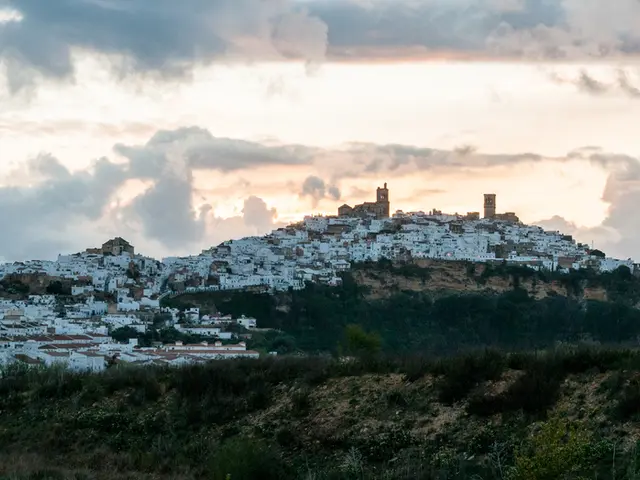Exploring Lesser-Visited Regions in Spain: Escaping the Tourist Crowds
Spain, a country renowned for its vibrant cities, sun-soaked coastlines, and rich culture, is encouraging tourists to explore its lesser-known regions and embrace sustainable travel. From the remote volcanic island of El Hierro to the charming rural towns in Extremadura, Spain offers a plethora of eco-friendly destinations that preserve the country's unique landscapes and cultures.
El Hierro, the smallest and most remote of the Canary Islands, is a beacon for eco-conscious travelers. With its pioneering use of renewable energy, commitment to protecting natural habitats, and isolation, the island has managed to keep visitor numbers low, preserving its unique character. El Hierro is also home to black-pebble Timijiraque beach, red-hued El Verodal, white-sand Arenas Blancas, and scuba diving destinations, making it an attractive yet sustainable choice for tourists.
Beyond the well-known cities, Spain’s interior and lesser-known rural regions such as northern Galicia, Extremadura, or the Aragonese Pyrenees remain largely off the mass tourism radar. These areas offer authentic local culture, natural beauty, and lower environmental impact compared to popular coastal and urban destinations.
In Extremadura, visitors can explore Monfrague, an internationally important national park, and Villuercas-Ibores-Jara, a Unesco GeoPark. The green northern coast of Spain, particularly the regions of Cantabria, Asturias, and Galicia, is relatively undiscovered by tourists from outside Spain and offers a distinct culture and cuisine.
To support sustainable tourism, it's essential to choose lesser-known destinations, opt for small towns or rural areas instead of crowded hotspots, and support local businesses. Engaging in responsible practices, such as asking hotels and hosts about their community engagement, avoiding cruise ship day trips that overwhelm small towns, and respecting local customs, are key steps to sustainable tourism.
Some destinations, like Costa Adeje in Tenerife, have won national awards for sustainable tourism by implementing long-term strategies that prioritize environmental, economic, and social sustainability. While Costa Adeje is popular, its approach to managing tourism and integrating community benefits offers insights for less-visited regions as well.
El Hierro's tourism minister, Davinia Suárez Armas, aims to increase tourism while improving the island's standard of living and preserving its natural resources. Teruel, a province in eastern Spain, is also promoting its hidden gems, with walled Mudejar towns, truffle hunting, hiking trails, and wild swimming spots. Even the Marqués de Riscal winery in La Rioja, designed by Frank Gehry, offers cellar visits and tastings.
By choosing these destinations and following sustainable travel principles, visitors can help preserve Spain’s unique landscapes and cultures for future generations. In Teruel, a political party won its first seat in the 2019 election to remind the rest of Spain that the province exists, highlighting the need for tourists to explore Spain's lesser-known regions.
In conclusion, Spain offers a wealth of sustainable tourist destinations that cater to eco-conscious travelers. From the remote islands to the rural towns, these destinations provide an authentic local experience while avoiding the negative impacts of overtourism. By choosing these destinations and engaging in sustainable practices, tourists can contribute to preserving Spain's unique landscapes and cultures for future generations.
Eco-conscious travelers may find El Hierro, a destination in Spain, appealing due to its commitment to renewable energy, protection of natural habitats, and preservation of unique character.
Beyond the well-known cities, regions like Extremadura, Galicia, or the Aragonese Pyrenees in Spain offer a chance to experience authentic local culture, natural beauty, and less environmental impact compared to popular destinations.




